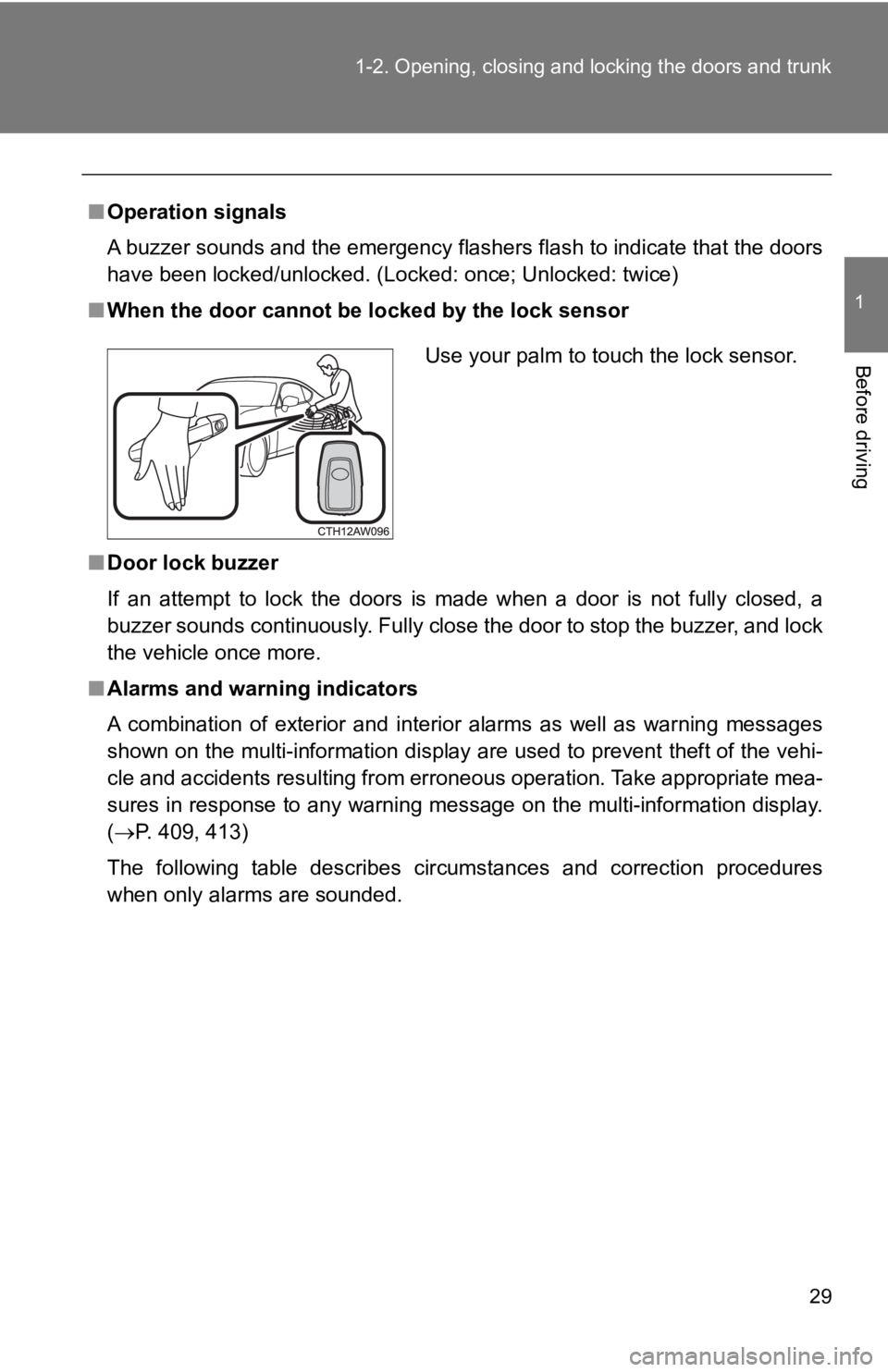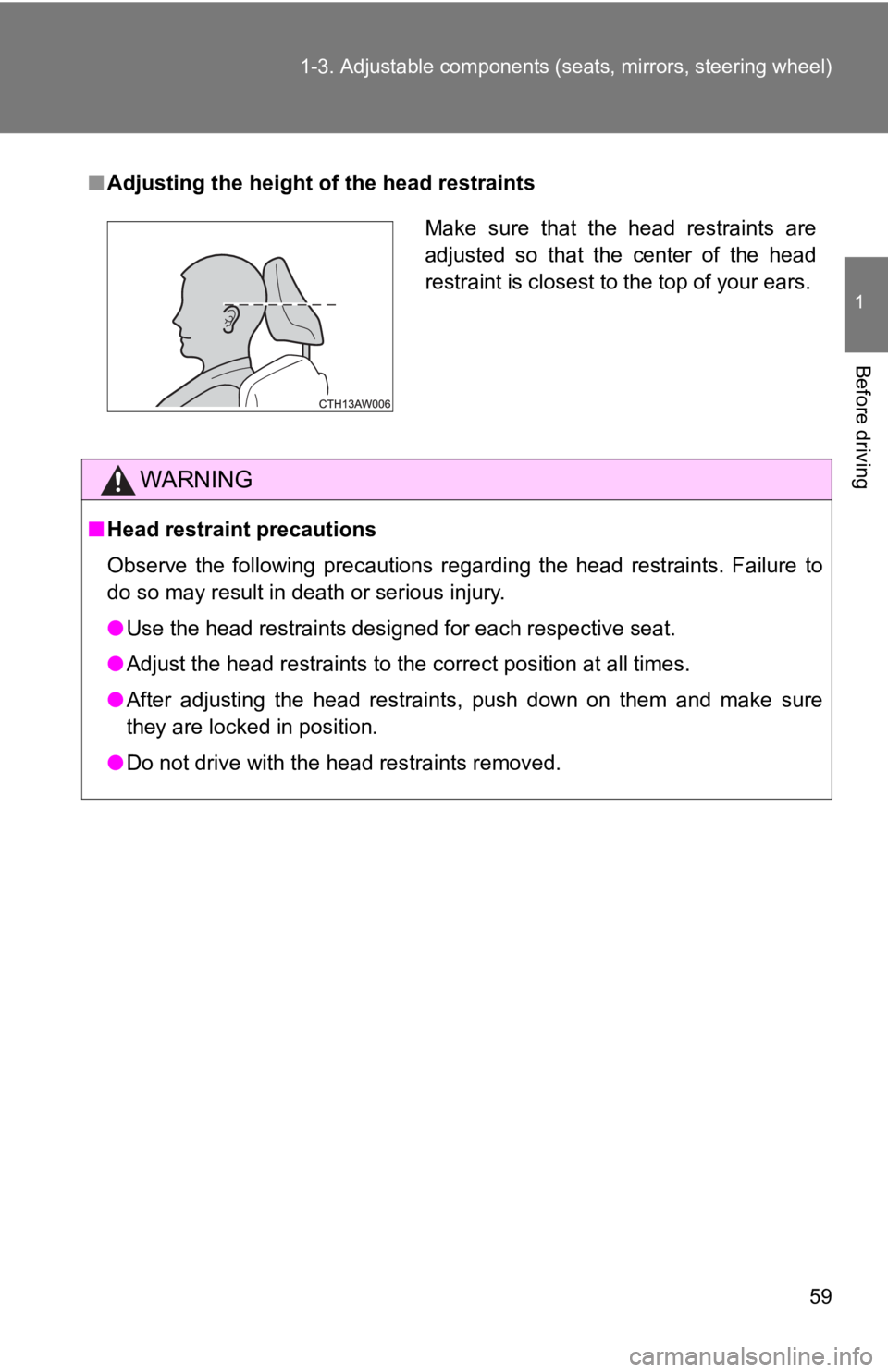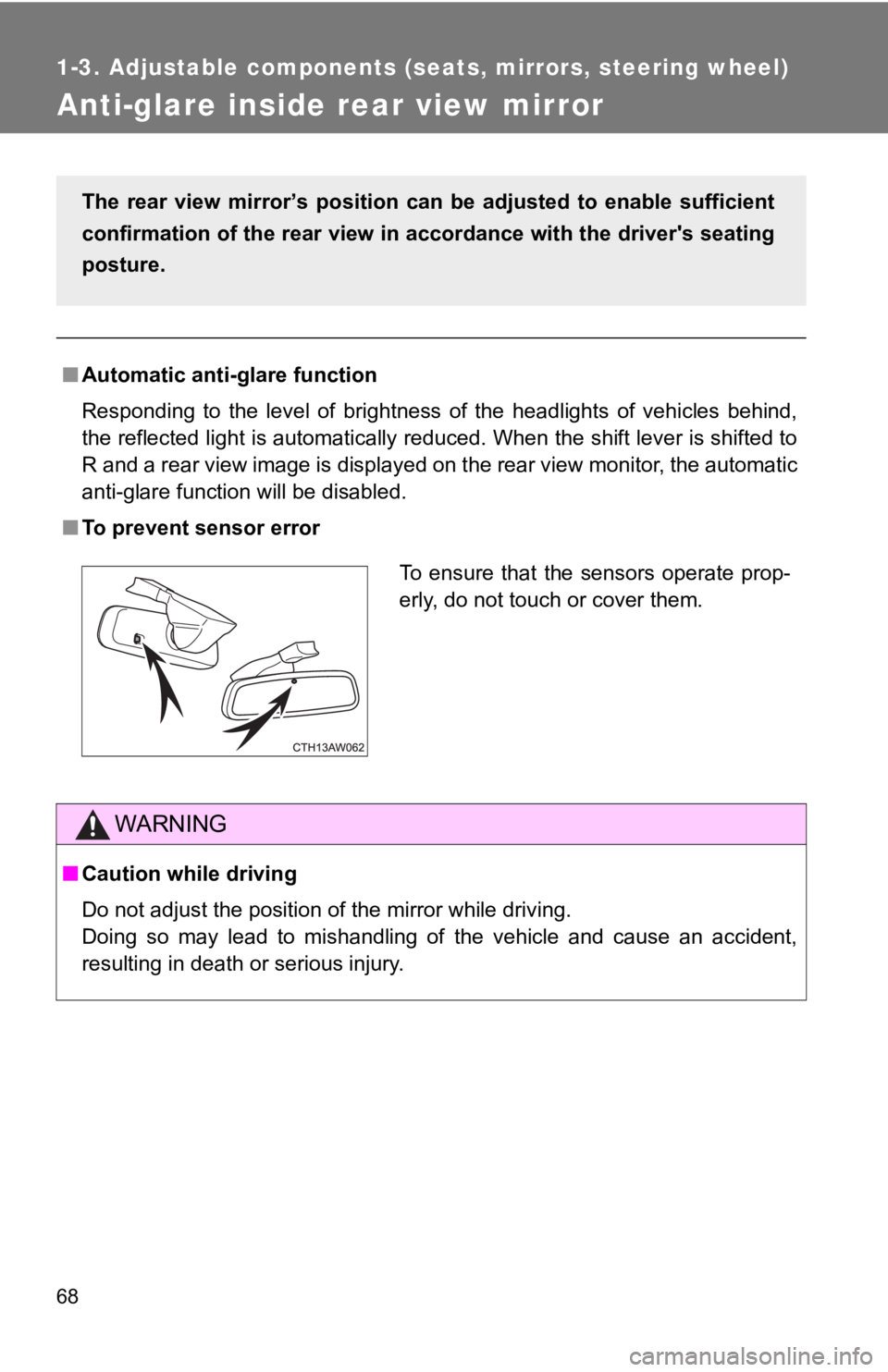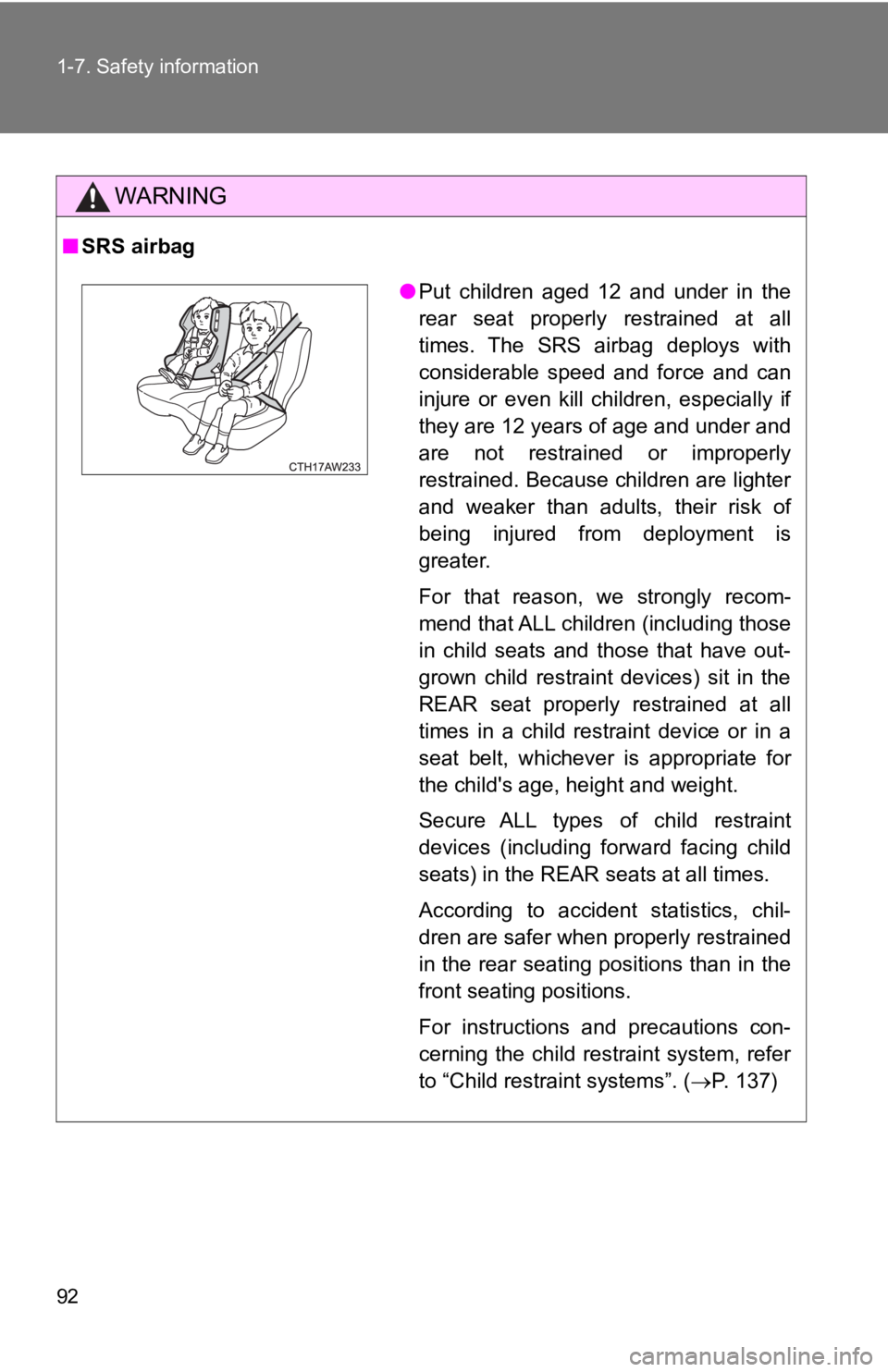ESP TOYOTA 86 2019 Owners Manual
[x] Cancel search | Manufacturer: TOYOTA, Model Year: 2019, Model line: 86, Model: TOYOTA 86 2019Pages: 532, PDF Size: 6.89 MB
Page 15 of 532

15For your information Main Owner’s Manual Please note that this manual applies to all models and explains all equip-
ment, including options. Therefore, you may find some explanations for
equipment not installed on your vehicle.
All specifications provided in this manual are current at the t ime of printing.
However, because of the Toyota policy of continual product impr ovement, we
reserve the right to make changes at any time without notice.
Depending on specifications, the vehicle shown in the illustrat ion may differ
from your vehicle in terms of color and equipment.
Noise from under vehicle af ter turning off the engineApproximately five to ten hours after the engine is turned off, you may hear
sound coming from under the vehicle for several minutes. This i s the sound
of a fuel evaporation leakage check and, it does not indicate a malfunction.
Accessories, spare parts and modification of your Toyota A wide variety of non-genuine spare parts and accessories for T oyota vehi-
cles are currently available in the market. You should know tha t Toyota does
not warrant these products and is not responsible for their per formance,
repair, or replacement, or for any damage they may cause to, or adverse
effect they may have on, your Toyota vehicle.
This vehicle should not be modified with non-genuine Toyota pro ducts. Mod-
ification with non-genuine Toyota products could affect its per formance,
safety or durability, and may even violate governmental regulations. In addi-
tion, damage or performance problems resulting from the modific ation may
not be covered under warranty.
Page 17 of 532

17Vehicle data recordings Your Toyota is equipped with several sophisticated computers th at will record
certain data, such as:
• Accelerator status
• Brake status
• Vehicle speed
The recorded data varies according to the vehicle grade level and options
with which it is equipped. These computers do not record conver sations or
sounds, and only record images outside of the vehicle in certai n situations.
● Data Transmission
Your vehicle may transmit the data recorded in these computers to Toyota
without notification to you.
● Data usage
Toyota may use the data recorded in these computers to diagnose malfunc-
tions, conduct research and development, and improve quality.
Toyota will not disclose the recorded data to a third party exc ept:
• With the consent of the vehicle owner or with the consent of t he lessee if
the vehicle is leased
• In response to an official request by the police, a court of l aw or a govern-
ment agency
• For use by Toyota in a lawsuit
• For research purposes where the data is not tied to a specific vehicle or
vehicle owner
● To learn more about the vehicle data collected, used and shared by
Toyota, please visit www.toyota.com/privacyvts/
.
Page 18 of 532

18 Event data recorder This vehicle is equipped with an event data recorder (EDR). The main pur-
pose of an EDR is to record, in certain crash or near crash-lik e situations,
such as an air bag deployment or hitting a road obstacle, data that will assist
in understanding how a vehicle’s systems performed. The EDR is designed
to record data related to vehicle dynamics and safety systems f or a short
period of time, typically 30 seconds or less.
The EDR in this vehicle is designed to record such data as:
• How various systems in your vehicle were operating;
• Whether or not the driver and passenger safety belts were buck led/fas-
tened;
• How far (if at all) the driver was depressing the accelerator and/or brake
pedal; and,
• How fast the vehicle was traveling.
These data can help provide a better understanding of the circumstances in
which crashes and injuries occur.
NOTE: EDR data are recorded by your vehicle only if a non-trivi al crash situ-
ation occurs; no data are recorded by the EDR under normal driv ing condi-
tions and no personal data (e.g., name, gender, age, and crash location) are
recorded. However, other parties, such as law enforcement, coul d combine
the EDR data with the type of personally identifying data routinely acquired
during a crash investigation.
To read data recorded by an EDR, special equipment is required, and access
to the vehicle or the EDR is needed. In addition to the vehicle manufacturer,
other parties, such as law enforcement, that have the special e quipment, can
read the information if they have access to the vehicle or the EDR.
● Disclosure of the EDR data
Toyota will not disclose the data recorded in an EDR to a third party except
when:
• An agreement from the vehicle’s owner (or the lessee for a lea sed vehicle)
is obtained
• In response to an official request by the police, a court of l aw or a govern-
ment agency
• For use by Toyota in a lawsuit
However, if necessary, Toyota may:
• Use the data for research on vehicle safety performance
• Disclose the data to a third party for research purposes witho ut disclosing
information about the specific vehicle or vehicle owner
Page 29 of 532

291-2. Opening, closing and locking the doors and trunk
1
Before driving ■ Operation signals
A buzzer sounds and the emergency flashers flash to indicate that the doors
have been locked/unlocked. (Locked: once; Unlocked: twice)
■ When the door cannot be locked by the lock sensor
■ Door lock buzzer
If an attempt to lock the doors is made when a door is not full y closed, a
buzzer sounds continuously. Fully close the door to stop the bu zzer, and lock
the vehicle once more.
■ Alarms and warning indicators
A combination of exterior and interior alarms as well as warnin g messages
shown on the multi-information display are used to prevent thef t of the vehi-
cle and accidents resulting from erroneous operation. Take appr opriate mea-
sures in response to any warning message on the multi-informati on display.
( P. 409, 413)
The following table describes circumstances and correction proc edures
when only alarms are sounded. Use your palm to touch the lock sensor.
Page 59 of 532

591-3. Adjustable components (s eats, mirrors, steering wheel)
1
Before driving ■ Adjusting the height o f the head restraints
WARNING■ Head restraint precautions
Observe the following precautions regarding the head restraints. Failure to
do so may result in death or serious injury.
● Use the head restraints designed for each respective seat.
● Adjust the head restraints to the correct position at all times .
● After adjusting the head restraints, push down on them and make sure
they are locked in position.
● Do not drive with the head restraints removed. Make sure that the head restraints are
adjusted so that the center of the head
restraint is closest to the top of your ears.
Page 68 of 532

681-3. Adjustable components (seats, mirrors, steering wheel)
Anti-glare inside rear view mirror ■ Automatic anti-glare function
Responding to the level of brightness of the headlights of vehicles behind,
the reflected light is automatically reduced. When the shift le ver is shifted to
R and a rear view image is displayed on the rear view monitor, the automatic
anti-glare function will be disabled.
■ To prevent sensor error
WARNING■ Caution while driving
Do not adjust the position of the mirror while driving.
Doing so may lead to mishandling of the vehicle and cause an ac cident,
resulting in death or serious injury.The rear view mirror’s position can be adjusted to enable suffi cient
confirmation of the rear view in accordance with the driver's s eating
posture.
To ensure that the sensors operate prop-
erly, do not touch or cover them.
Page 74 of 532

741-4. Opening and closing the windows
WARNING■ Closing the windows
Observe the following precautions.
Failure to do so may result in death or serious injury.
● The driver is responsible for all the power window operations, including the
operation for the passengers. In order to prevent accidental op eration,
especially by a child, do not let a child operate the power win dows. It is
possible for children and other passengers to have body parts c aught in
the power window. Also, when riding with a child, it is recomme nded to use
the window lock switch. ( P. 72)
● Check to make sure that all passengers do not have any part of their body
in a position where it could be caught when a window is being o perated.
● When exiting the vehicle, turn the engine switch (vehicles with out a smart
key system) or the “ENGINE START STOP” switch (vehicles with a smart
key system) off, carry the key and exit the vehicle along with the child.
There may be accidental operation, due to mischief, etc., that may possi-
bly lead to an accident.
■ Jam protection function
● Never use any part of your body to intentionally activate the j am protection
function.
● The jam protection function may not work if something gets caug ht just
before the window fully closes.
Page 92 of 532

921-7. Safety information
WARNING■ SRS airbag
● Put children aged 12 and under in the
rear seat properly restrained at all
times. The SRS airbag deploys with
considerable speed and force and can
injure or even kill children, especially if
they are 12 years of age and under and
are not restrained or improperly
restrained. Because children are lighter
and weaker than adults, their risk of
being injured from deployment is
greater.
For that reason, we strongly recom-
mend that ALL children (including those
in child seats and those that have out-
grown child restraint devices) sit in the
REAR seat properly restrained at all
times in a child restraint device or in a
seat belt, whichever is appropriate for
the child's age, height and weight.
Secure ALL types of child restraint
devices (including forward facing child
seats) in the REAR seats at all times.
According to accident statistics, chil-
dren are safer when properly restrained
in the rear seating positions than in the
front seating positions.
For instructions and precautions con-
cerning the child restraint system, refer
to “Child restraint systems”. ( P. 137)
Page 100 of 532

1001-7. Safety information
■ If the front passenger’s frontal a irbag ON indicator illuminate s and the
OFF indicator turns off even when an infant or a small child is in a child
restraint system (incl uding booster seat)
Turn the engine switch to the “LOCK” position (vehicles without a smart key
system), or turn the “ENGINE START STOP” switch off (vehicles w ith a
smart key system) if the front passenger’s frontal airbag ON in dicator illumi-
nates and the OFF indicator turns off even when an infant or a small child is
in a child restraint system (including booster seat). Remove th e child
restraint system from the seat. By referring to the child restraint manufac-
turer’s recommendations as well as the child restraint system installation
procedures in “Child restraint systems” ( P. 137), correctly install the child
restraint system. Turn the engine switch to the “ON” position ( vehicles with-
out a smart key system), or turn the “ENGINE START STOP” switch to IGNI-
TION ON mode (vehicles with a smart key system) and make sure t hat the
front passenger’s frontal airbag ON indicator turns off and the OFF indicator
illuminates.
If still the ON indicator remains illuminated while the OFF ind icator turns off,
take the following actions.
● Ensure that no article is placed on the seat other than the chi ld restraint
system and the child occupant.
● Ensure that the backward-forward position and seatback of front passen-
ger’s seat are locked into place securely by moving the seat back and
forth.
If the ON indicator still remains illuminated while the OFF indicator turns off
after taking relevant corrective actions described above, reloc ate the child
restraint system to the rear seat and immediately contact your Toyota dealer
for an inspection.
NOTE
When a child who has outgrown a child restraint system or a sma ll adult is
seated in the front passenger’s seat, the Toyota advanced front al airbag sys-
tem may or may not activate the front passenger’s SRS frontal a irbag
depending on the occupant’s seating posture. The child should a lways wear
the seat belt when sitting in the seat irrespective of whether the airbag is
deactivated or activated. If the front passenger’s SRS frontal airbag is acti-
vated (the ON indicator remains illuminated while the OFF indic ator turns
off), take the following actions.
Page 101 of 532

1011-7. Safety information
1
Before driving ● Ensure that no article is placed on the seat other than the occupant.
If the ON indicator still remains illuminated while the OFF indicator turns off
despite the fact that the actions noted above have been taken, seat the
child/small adult in the rear seat and immediately contact your Toyota dealer
for an inspection. Even if the system has passed the dealer ins pection, it is
recommended that on subsequent trips the child/small adult alwa ys take the
rear seat.
Children who have outgrown a child restraint system should alwa ys wear the
seat belt irrespective of whether the airbag is deactivated or activated.
■ Conditions in which fr ont passenger’s SRS frontal airbag is act ivated
The front passenger’s SRS frontal airbag will be activated for deployment
upon impact when any of the following conditions are met regard ing the front
passenger’s seat.
● When the seat is occupied by an adult.
● When a certain item(s) (e.g. jug of water) is placed on the seat.